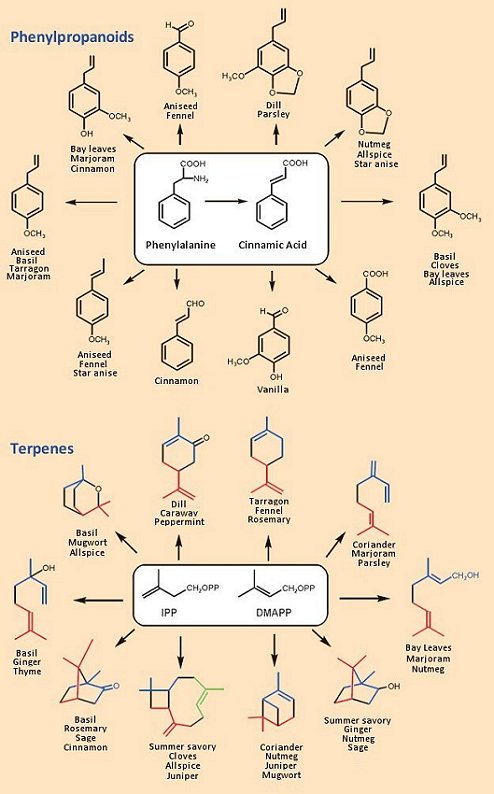Seductive Aromas of the Culinary Herbs
The culinary herbs produce their fragrant components in two very different biochemical ways.
The amino acid phenylalanine is the starting material for the phenylpropanoids, with intact (aromatic!) benzene rings.
Terpenes constitute the second class of fragrant compounds, which are derived from a combination of the biochemically “active” isoprene molecules IPP (isopentenyl pyrophosphate) and DMAPP (dimethylallyl pyrophosphate).
In the resulting products, C5-isoprene units are relatively easy to recognize; here they have been differentiated from one another by color. In both of the independent synthetic pathways the basic units cinnamic acid and geranyl pyrophosphate are transformed via such simple reactions as oxidation, hydration, ring formation, etc., into a host of new compounds.

Figure 4. Compounds that give culinary herbs their aroma.
In certain herbs, such as aniseed, the phenyl derivatives are dominant, whereas with coriander, for example, the terpenes play this role. The characteristic scent of basil results from both terpenes and phenylpropanoids.
The compounds presented here constitute only a small (!) sample of the synthetic versatility displayed in the culinary herbs [11].
Reference
[11] W. Ternes, Naturwissenschaftliche Grundlagen der Lebensmittelzubereitung, Behr’s Verlag, Hamburg, Germany 1990. Link



